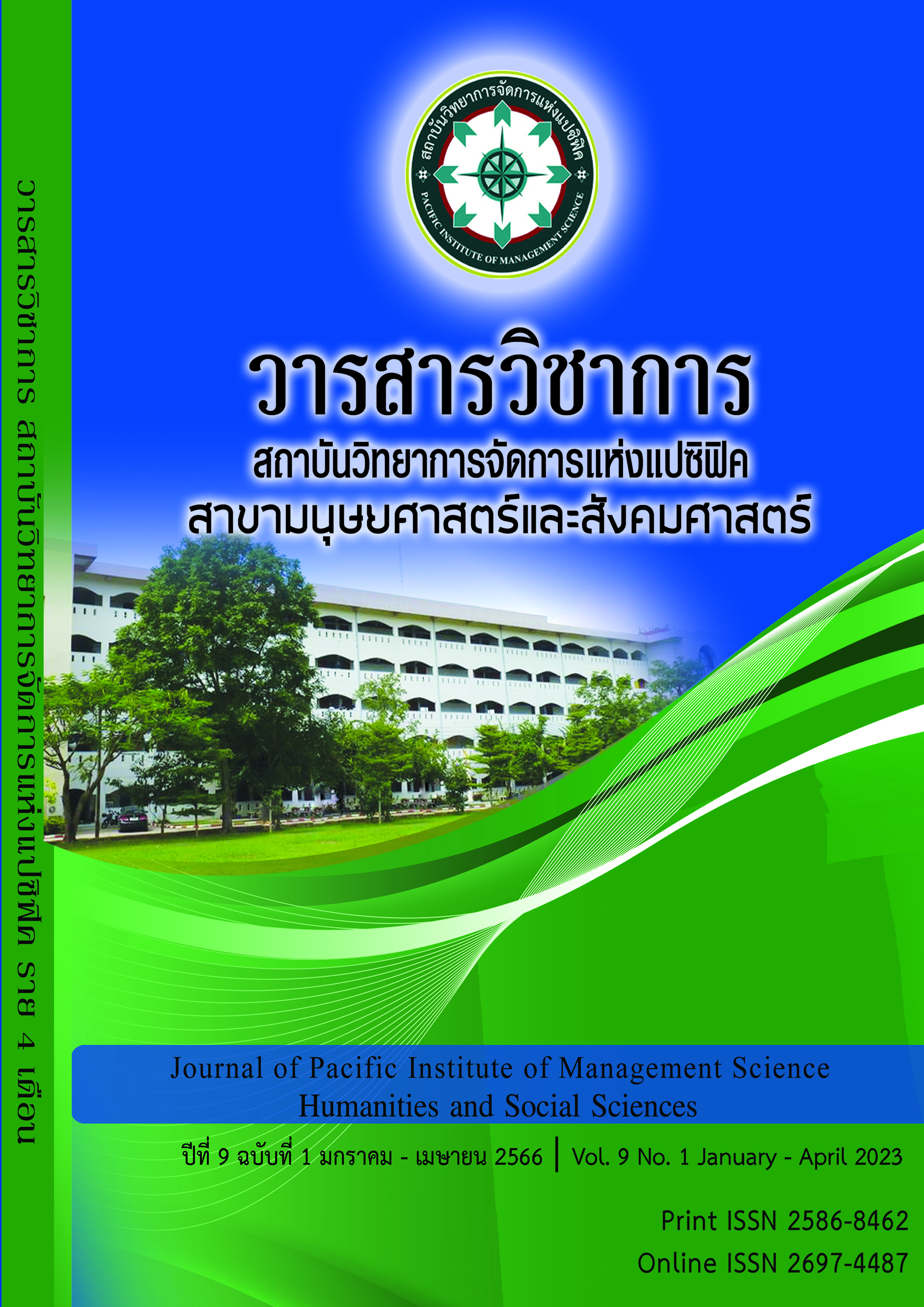Desired Characteristics Portrayed in Youth Literature “The Boy Who Does Not Know How to Paint Blue Color”
Keywords:
desired characteristics, youth literature, the basic education core curriculumAbstract
The purpose of this article was to analyze the eight desirable characteristics depicted in 13th Wan Kaew Award winning youth literature of B.E. 2559 entitled The Boy Who Does Not Know How to Paint Blue Color. The eight desirable characteristics of the Bureau of Academic Affairs and Educational Standards, Office of the Basic Education Commission, Ministry of Education were employed as the study’s analytical framework. The results were presented descriptively.
The study revealed that there were seven types of desired characteristics found as follows: 1) honesty and integrity that was portrayed via the trustworthy conversations of the main character and the sincere behaviors responded to different situations: 2) self-discipline that could be seen from the character who followed the school’s regulations, the traffic rules, and the agreements made for the purpose of being a good child of his parents: 3) avidity for learning which was depicted when the character tried to learn many things despite his physical restrictions: 4) applying principles of sufficiency Economy Philosophy in one’s way of life when the character was being reasonable and thoughtful toward his spending without bothering other people: 5) dedication and commitment to work from which the character dedicated his time and effort in order to get his assignments done: 6) cherishing Thai nationalism which was seen when the character followed Thai customs and cultures, and exhibited graciousness: and 7) public-mindedness that was elaborated by depicting the donations of personal belongings for the public affairs. From the findings, it is evident that despite providing entertainment to the readers, The Boy Who Does Not Know How to Paint Blue Color is embedded with the desired characteristics of the Basic Education Core Curriculum B.E. 2551
References
กระทรวงศึกษาธิการ. (2551). หลักสูตรแกนกลางการศึกษาขั้นพื้นฐาน พุทธศักราช 2551. กรุงเทพฯ: โรงพิมพ์ ชุมชนสหกรณ์การเกษตรแห่งประเทศไทย
กรมการศาสนา กระทรวงวัฒนธรรม. (2550). การพัฒนาส่งเสริมคุณธรรมประชาชนประจำปี 2550. กรุงเทพฯ: โรงพิมพ์ชุมชนสหกรณ์การเกษตรแห่งประเทศไทย.
รุจรวี นาเอก. (2561). เด็กชายผู้ระบายสีฟ้าไม่เป็น. กรุงเทพฯ: นานมีบุ๊คส์.
สำนักนายกรัฐมนตรี. (2555). แผนพัฒนาเศรษฐกิจและสังคมแห่งชาติ ฉบับที่ 11 พ.ศ. 2555-2559. สืบค้น 4 พฤศจิกายน 2565, จาก https://www.nesdc.go.th/ewt_news.php?nid=5748&filename=develop_issue.
สำนักนายกรัฐมนตรี. (2560). แผนพัฒนาเศรษฐกิจและสังคมแห่งชาติ ฉบับที่ 12 พ.ศ. 2560-2564. สืบค้น 4 พฤศจิกายน 2565, จาก https://www.nesdc.go.th/ewt_news.php?nid=6420&filename=develop_issue.
สุภัชฌาน์ ศรีเอี่ยม และจันทร์ฤดี ภาคตอน. (2563). วิเคราะห์คุณลักษณะอันพึงประสงค์ 8 ประการที่ปรากฏในสุภาษิตสอนหญิง. มนุษศาสตร์สังคมศาสตร์ปริทัศน์, 8(2), 93-103.
ภควรรณ นาคสิงห์. (2557). การวิเคราะห์คุณลักษณะอันพึงประสงค์ที่ปรากฏในบทอาขยานภาษาไทยตามหลักสูตรแกนกลางการศึกษาขั้นพื้นฐาน พุทธศักราช 2551 (วิทยานิพนธ์ปริญญาศิลปศาสตรมหาบัณฑิต). พิษณุโลก: มหาวิทยาลัยนเรศวร.
Shi Weihong. (2558). ภาพสะท้อนสังคมไทยในวรรณกรรมของ งามพรรณ เวชชาชีวะ (วิทยานิพนธ์ศิลปศาสตรมหาบัณฑิต). กรุงเทพฯ: มหาวิทยาลัยหัวเฉียวเฉลิมพระเกียรติ.
Downloads
Published
Issue
Section
License
Copyright (c) 2023 Pacific Institute of Management Science

This work is licensed under a Creative Commons Attribution-NonCommercial-NoDerivatives 4.0 International License.
บทความที่ได้รับการตีพิมพ์เป็นลิขสิทธิ์ของ สถาบันวิทยาการจัดการแห่งแปซิฟิค
ข้อความที่ปรากฏในบทความแต่ละเรื่องในวารสารวิชาการเล่มนี้เป็นความคิดเห็นส่วนตัวของผู้เขียนแต่ละท่านไม่เกี่ยวข้องกับสถาบันวิทยาการจัดการแห่งแปซิฟิค และคณาจารย์ท่านอื่นๆในสถาบันฯ แต่อย่างใด ความรับผิดชอบองค์ประกอบทั้งหมดของบทความแต่ละเรื่องเป็นของผู้เขียนแต่ละท่าน หากมีความผิดพลาดใดๆ ผู้เขียนแต่ละท่านจะรับผิดชอบบทความของตนเองแต่ผู้เดียว







